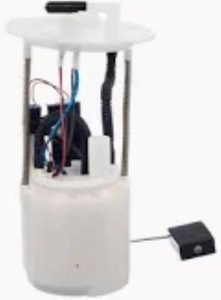Fuel pumps are strongly influenced by temperature -whether extremely hot or cold, this can lead to problems in the fuel delivery system, which consequently will cause a car not to start. The high temperature can cause the fuel pump to overheat, and in low fuel levels, this will tend aggravates. Gasoline cools and lubricates the components of the pump, so running low on fuel in hot weather heightens chance for overheating. The National Institute for Automotive Service Excellence (ASE) released a study in 2019 that found heating related problems are one of the top factors affecting fuel pumps, with nearly 15% of pump failures being due to overheated.
This overheating can caused internal damage such as worn seals or degraded electrical components in the pump. This leads to the fuel pump, resulting in not enough fuel delivery being sent to the engine, thus causing poor performance, engine hesitations and stalling. Even fuel evaporating in the lines can result from high temps, leaving you without sufficient gogo juice to make the engine run. This is a common issue for older vehicles without the state-of-the-art vapor recovery systems found in new cars.
Conversely, a fuel pump can also be damaged as a result of very cold temperatures. In cold weather, fuel can thicken which puts more strain on the pump to push the fuel through the lines. Also, the moisture inside the fuel system freezes and can create blockages keeping fuel from reaching the engine. Indeed, a 2020 AAA report indicated that cold weather in general boosts the failure rate of fuel pumps by about 10%, especially in subzero locations. Drivers in cold climates must take steps to combat freezing problems, oftenkeeping the tank full of gasoline to prevent water condensation on the inside ofthe hoses and adding a bottle of fuel stabilizer or a gas line antifreeze.

There is also the electrical components in the fuel pump which will have its efficiency determined a lot by temperature. Wiring and connectors will decay over time when there are extreme heat conditions as well as bitter cold. This in turn decreases the fuel pump's ability to deliver pressure where it's needed—typically in the neighborhood of 40-70 psi for fuel injected engines—affecting engine performance.
Elon Musk once said "The best part is No Part". While his perspective on simplifying technology can be applied to fuel systems, for example, seamlessly running the pump properly and eliminating safe temperature damage cuts down on expensive part replacements.
Also, having an adequate amount of fuel in the tank can prevent the fuel pump from overheating or even freezing—about two big no-no's! Substituting used or damaged parts, like the gas filter every 30k-40k miles which element of wear even damage to pump, especially in harsh climates.
And there you have it, excessive temperatures can actually make a fuel pump overheat or freeze which in return impacts the output and might cause it to fail. With a strict regimen of maintenance and keeping the pump from temperature swings helps to increase the lifespan. To learn more about diagnosing or replacing your fuel pump check out Fuel Pump